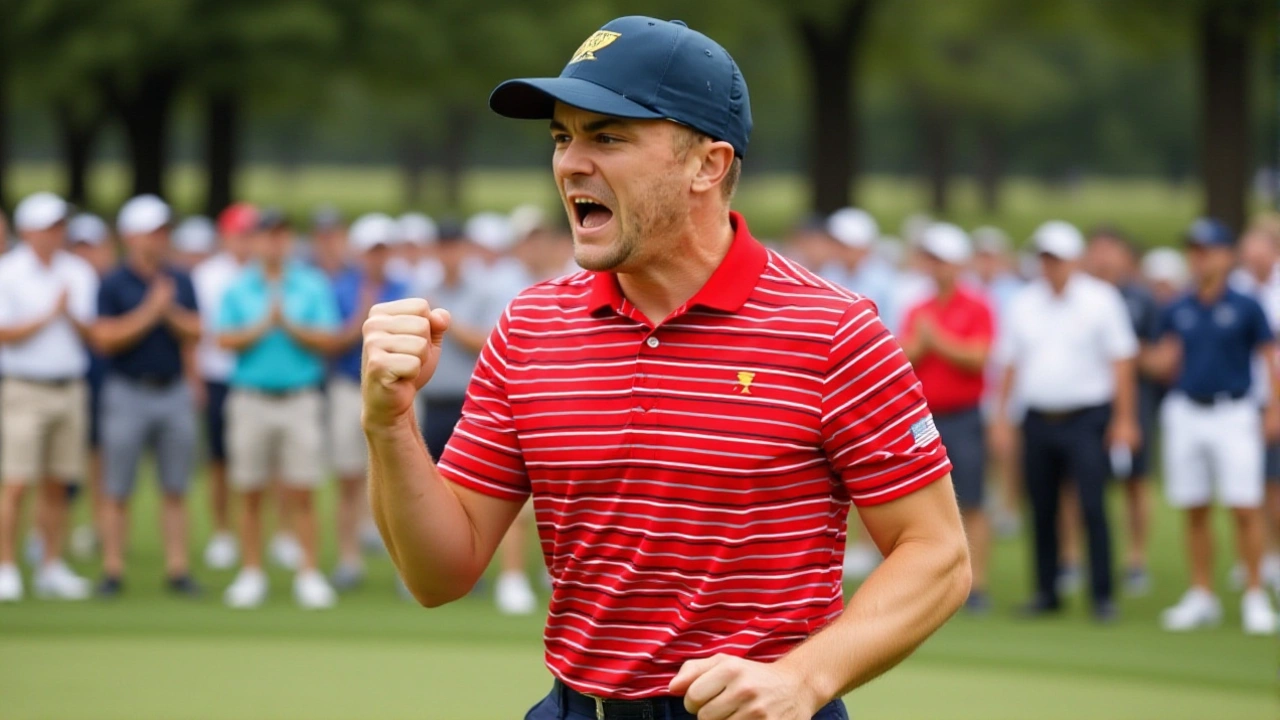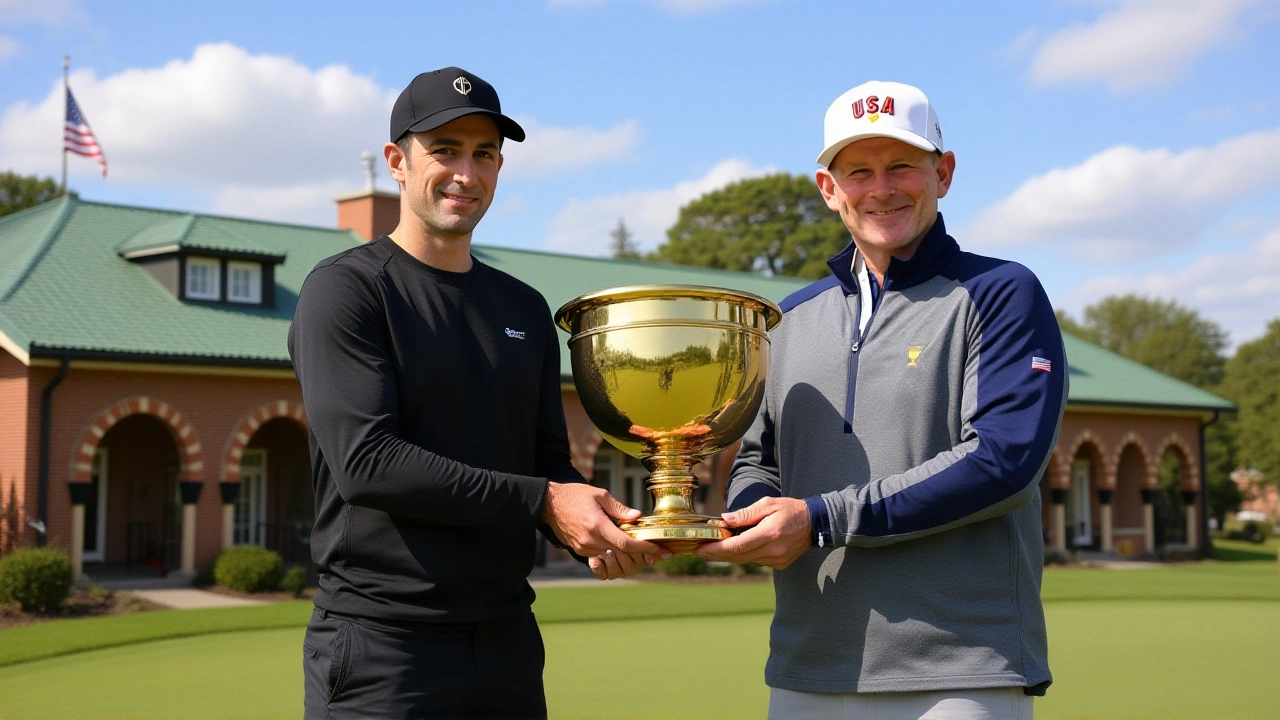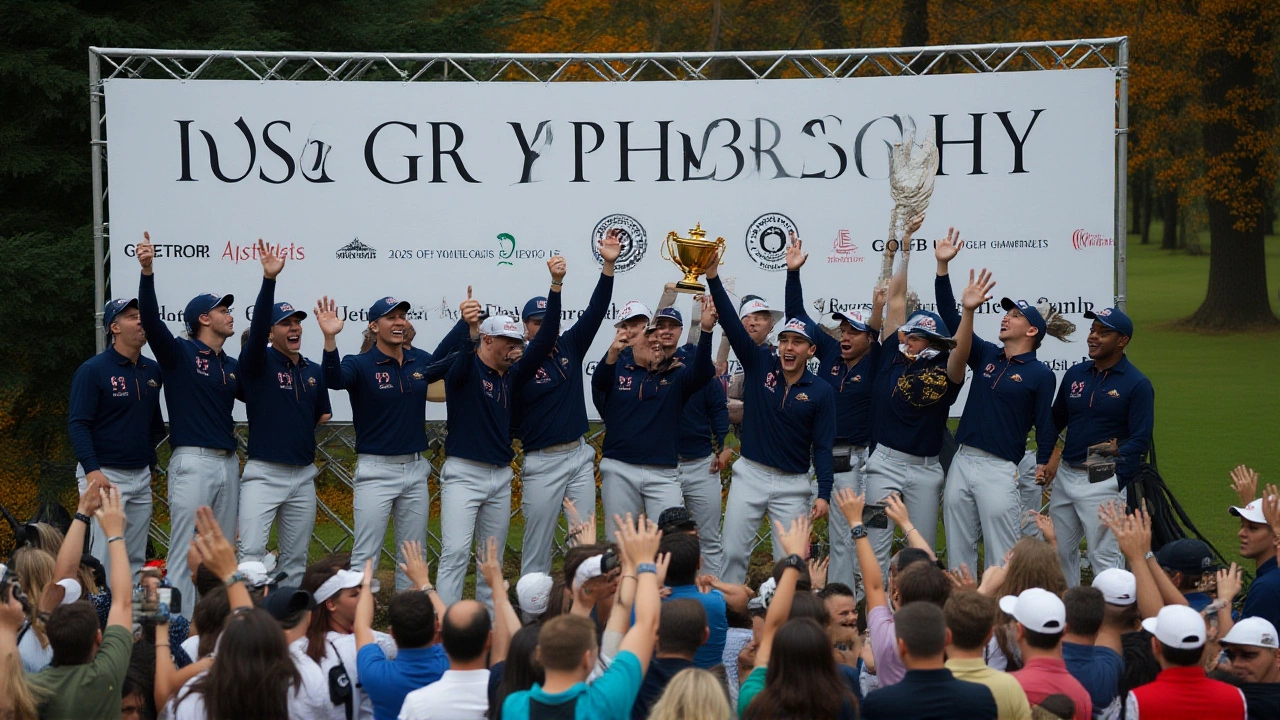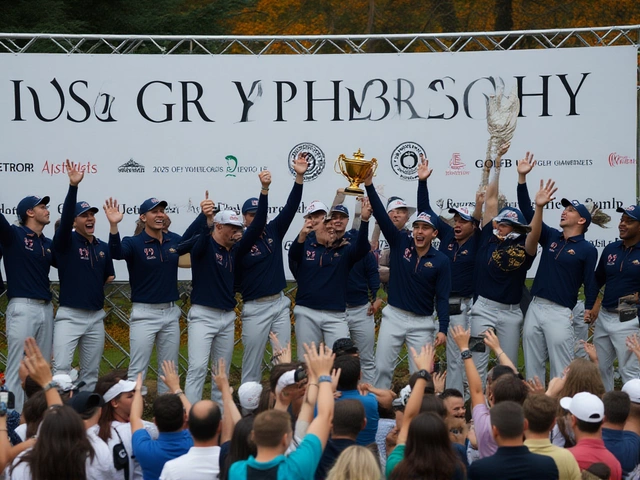On December 16, 2024, the PGA of America unveiled a historic pay‑for‑play plan that will see every member of the U.S. team – including captain Keegan Bradley, U.S. Ryder Cup captain – pocket $500,000 for the 2025 Ryder CupBethpage Black Golf Course in Bethpage Black, Long Island, New York. The move shatters a 98‑year precedent in which U.S. players only contributed to charitable baskets, never receiving personal compensation.
The breakdown is simple yet striking: $300,000 of each $500,000 allocation is earmarked for charity, while the remaining $200,000 is a direct stipend to the player. Multiply that by the 12‑member squad and you get a $6.5 million payout, $3.9 million of which will flow to charitable causes. The decision was announced by interim CEO Kerry Haigh, who stressed the PGA’s autonomy, noting that the Tour was not consulted despite mirroring its Presidents Cup model.
Background: A Compensation Void Since 1999
Since the turn of the millennium, the U.S. Ryder Cup payout has sat at a flat $200,000 per player, entirely routed to nonprofit charities. That figure, first set in 1999, survived waves of debate, even as the competition’s revenue ballooned into the tens of millions. In 2023, star Patrick Cantlay reportedly muttered about the lack of personal payment during a post‑match interview, subtly flashing a protest by forgoing the team hat.
Two weeks before the December announcement, the tension resurfaced at the Hero World Challenge when Tiger Woods and several teammates hinted that the Ryder Cup generates "massive income" that should trickle down to the players. Their comments sparked a flurry of social‑media debate, with former captains penning a joint letter urging the PGA to channel every dollar to charity.
The New Pay Structure Explained
- Total payout: $6.5 million
- Charitable allocation: $3.9 million (60% of each player's share)
- Direct player stipend: $2.6 million (40% of each player's share)
- Individual player stipend: $200,000
- Charity portion per player: $300,000
President Don Rea framed the change as a "modern‑day evolution" for the competition, emphasizing that the PGA Board voted unanimously after extensive internal review. He added, "The players and captains, past and present, are responsible for the Ryder Cup becoming the most special competition in golf and one of the most in‑demand events worldwide."
Player Reactions: Charity First
Captain Bradley quickly defended the plan, describing it as "the PGA of America coming to me to bring the Ryder Cup into the present day." He announced his personal intention to donate the entire $500,000 to charitable causes, calling the split "a personal choice" for each teammate. Fellow squad member Xander Schauffele echoed the sentiment, confirming that his whole allocation will also flow to nonprofits.
CEO Derek Sprague elaborated on the strategic rationale, saying, "Bradley aimed to maximize the positive impact of the funds, which is why $300,000 of the $500,000 allocation is going to charity." While no player publicly demanded the stipend, the Board’s decision reflects a growing acknowledgment that the competition’s financial engine has outpaced the outdated compensation model.

European Perspective: A Growing Rift
The compensation gap has not gone unnoticed across the Atlantic. Ryder Cup Europe players receive no direct payment, a point of contention that European Golf Union officials have flagged as "inconsistent with the spirit of a national team event." Sports Illustrated’s Bob Harig highlighted this disparity, noting that the move could set a precedent that forces Europe to reconsider its stance or risk a talent drain.
Golf Channel analyst Rex Hoggard warned, "The plan appears elegant for the U.S., but it creates an awkward issue: European players are not compensated to play the Ryder Cup." Critics argue that paying athletes to represent their country undermines the amateur ethos that originally defined the competition back in 1927 when Walter Hagen led the U.S. to a 9.5‑2.5 victory.
Implications for Future Ryder Cups
If the 2025 event proves successful – both on the leaderboard and in charitable impact – the PGA may cement the stipend as a permanent fixture. That could trigger a domino effect: other team events like the Presidents Cup, International Crown, or even the Olympic golf tournament might revisit their compensation policies.
Moreover, the public’s reaction will likely shape whether the PGA expands the charity component or adjusts the stipend size. Early polling suggests that fans are split – traditionalists balk at “pay‑for‑play,” while younger audiences view the stipend as a fair reward for the grueling schedule professional golfers endure.
What’s Next: Timeline and Watch‑Points
The 2025 Ryder Cup kicks off on September 27 at Bethpage Black, with the first singles match scheduled for October 1. In the lead‑up, the PGA has pledged to publish a transparent breakdown of how the $3.9 million charitable pool will be allocated, targeting youth golf programs and community health initiatives in the U.S. Meanwhile, European officials are convening a special committee to discuss a possible compensation model for their side, though no concrete proposal has emerged yet.
Observers will be watching three key indicators: the performance of the U.S. team (does money translate to better play?), the media narrative surrounding the charitable impact, and any diplomatic chatter from the European camp that could reshape the competitive balance.

Frequently Asked Questions
How does the new payout affect U.S. players financially?
Each player receives a $200,000 direct stipend and a $300,000 earmarked for charity. While most top players, like Keegan Bradley and Xander Schauffele, have said they will donate the entire amount, the stipend gives them flexibility to support personal causes or invest as they see fit.
Why were European players left out of the compensation plan?
The PGA of America’s decision applies only to its U.S. contingent. Ryder Cup Europe operates under a separate governing body, which has not yet adopted a similar stipend policy, sparking criticism of a competitive imbalance.
What charitable causes will receive the $3.9 million?
The PGA vowed to direct funds toward youth golf initiatives, community health programs, and scholarships for under‑privileged athletes across the United States. A detailed allocation list will be released ahead of the tournament.
Will this pay‑for‑play model become permanent?
The PGA treats the 2025 stipend as a pilot. If the model proves popular with fans, sponsors, and players, it could be institutionalized for future U.S. Ryder Cups, potentially prompting similar moves in other international team events.
How might this change affect the competitive dynamic between the U.S. and Europe?
Analysts warn that financial incentives could widen the performance gap, as U.S. players might feel additional motivation. However, European players could use the perceived inequity as fuel, intensifying the rivalry for the 2025 showdown at Bethpage Black.

